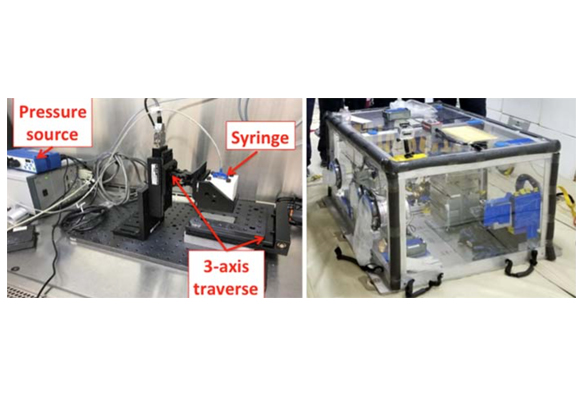3D Printing of Hierarchical Foams in Microgravity
PI: Konstantinos Sierros, West Virginia University, John Kuhlman (Co-I), West Virginia University - Fairmont
PI: Konstantinos Sierros, West Virginia University, John Kuhlman (Co-I), West Virginia University - Fairmont

- TA12 Materials, Structures, Mechanical Systems and Manufacturing
The payload apparatus consists of an in-house built pneumatic-based extrusion 3D printer that will be integrated into an existing payload frame and enclosure. Mechanical, electrical, and microstructural post-flight characterization data from the µG-printed specimens will be compared with similar data for a series of otherwise identical baseline Earth-printed specimens.
The proposed foams have promise for space applications, including use for radiation shielding for future human space exploration missions, use in solar cell arrays and/or batteries, use in embedded sensors, and for water and/or air photocatalytic treatment.
Technology Details
-
Selection DateREDDI-F1-18 (Aug 2018)
-
Program StatusActive
- 1 Parabolic
Development Team
-
PIKonstantinos Sierros
-
PI Organization
-
Co-IJohn Kuhlman
-
Co-I Organization
-
SponsorNASA
-
More Information

